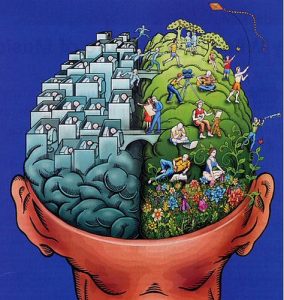I n the previous post, I mentioned that this is a time when my client work has converged with my writing and reflection. Such moments can provide remarkable synergy. In this case, two clients started me thinking about a chain of ideas and arguments that I had not considered for some time.
n the previous post, I mentioned that this is a time when my client work has converged with my writing and reflection. Such moments can provide remarkable synergy. In this case, two clients started me thinking about a chain of ideas and arguments that I had not considered for some time.
This return to basics has provoked a review of my fundamental rationale concerning the power of narrative discourse to influence one’s world. Of course, I have spoken often, and for many years, about how people at all levels of organizations use their personal stories of identity to inspire those around them. Nonetheless, it has been a useful exercise for me to review some of my core concepts, write them down, and present them to this pair of clients.
Writing down our core concepts on a topic causes us to rediscover, revisit and codify them. Consequently, this is something I recommend my clients do from time to time, even in their areas of expertise.
As such, one day on the train, I made a list of the most prominent reasons why we should give narrative a central place in presentations, and corporate communication in general. On another occasion, I tried to recall and enumerate all the objections I have heard over the years, in the difficult moments when individuals are skeptical or reluctant about replacing some of their rational arguments with personal storytelling.
My recent interaction with clients also caused me to do a greatly beneficial exercise: I went over in my mind and fleshed out on a piece of paper, my underlying explanation for why narrative-based discourse can often trump rational argument. What follows is a summary of my reasoning.
Consider what happens when a speaker seeks to persuade us with facts, statistics, and reason. As listeners, we are constantly making judgements about what is being said, even arguing with the speaker in our minds. We use other sources of information, our own ideas, and whatever we might have read or heard in other places. This is a normal dynamic, since we are taught in school to do critical thinking, to use our analytical ability to pick apart the arguments of others.
In general, we experience rational discourse as outsiders looking in. With rhetorical argumentation—or numbers, charts and statistics—we as listeners remain outside, looking on and criticizing, searching for flaws in the logic. We keep our distance from the teller, and even generate our own counter-arguments. And, when a very good presenter does manage to convince us, it is still often not enough to move us to action. Human beings are simply not inspired to act by reason alone.
Story touches us in a far more holistic way than rhetoric. It is only through narrative that we can touch the entire brain—the left (feeling) hemisphere as well as the right (logical and rational) hemisphere, the subconscious as well as the conscious. Since stories can reach both our emotional and our rational sides, they allow us to see and feel information, as opposed to merely understanding it.
When we listen to a story, we share the space with the teller, and we experience it in an entirely different way than argumentation. We are not sitting outside, arguing in our minds with the teller. There is nothing to argue with; we are simply in the story with the speaker, imagining what it must have felt like to be there in that moment.
As such, the great advantage of narrative is that it invites us in. If a story is well told, we experience it from the inside; it touches our hearts as well as our heads. And, when a speaker arouses our emotion, not just our intellect, we are more readily moved to action.
For me, this is the great power of personal storytelling. When we come inside someone’s story, we are no longer arguing with the teller in our minds. We experience the anecdote as insiders, and reliving it with the teller engenders empathy and trust between us.
When we fail to integrate narrative into our speeches and presentations, we miss a great opportunity to reach our listeners and to touch their hearts, to connect with them through human emotion.
Image: Flickr user TZA
